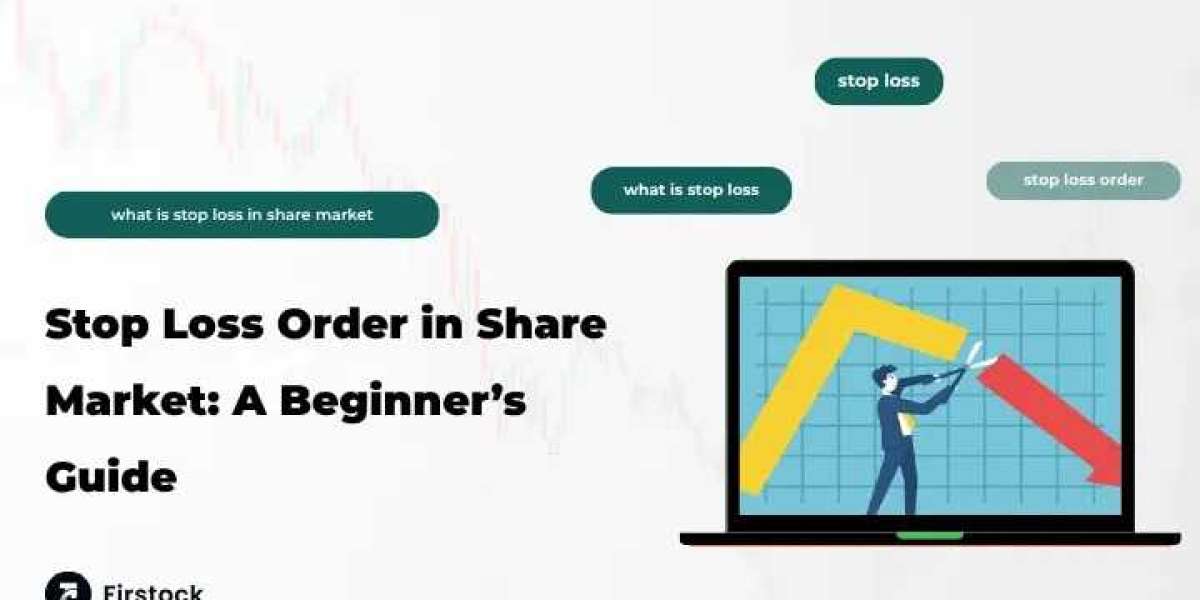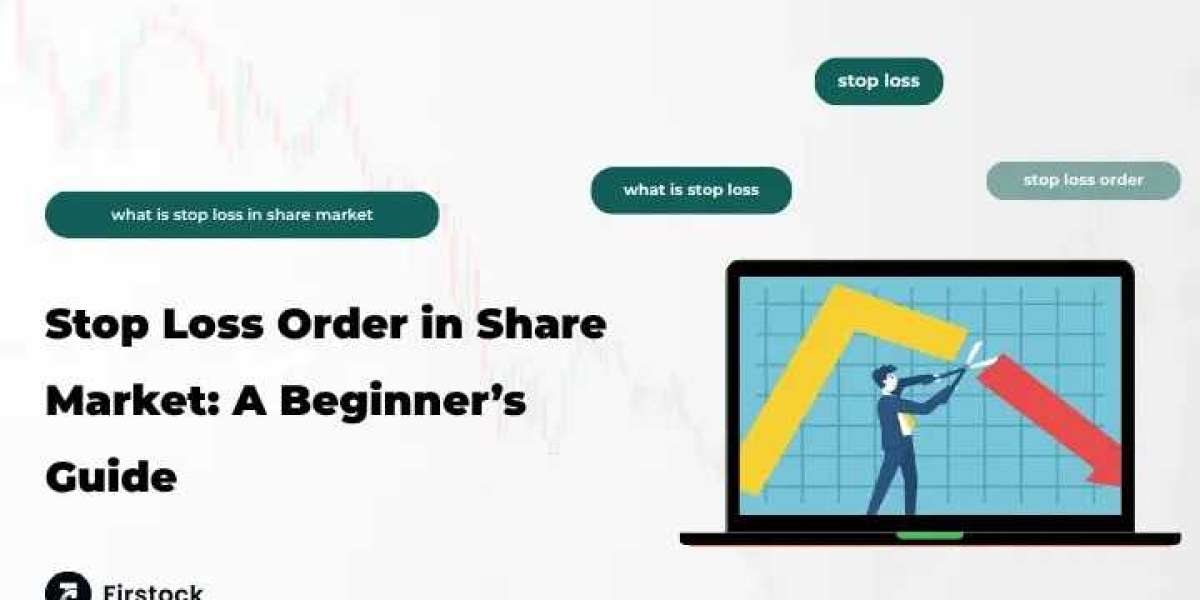What is Stop Loss in Share Market? A Complete Beginner’s Guide
Introduction
Ever bought a stock only to see its price fall sharply the next day? If yes, you know how stressful that can be. But what if there was a way to limit your losses automatically? That’s where Stop Loss comes in — your invisible safety net in the world of trading.
In this article, we’ll simplify what is stop loss in share market, how it works, and why it’s essential for every trader — especially beginners. Whether you use a trading app in India or a desktop platform, understanding stop loss could save your investments from taking a nosedive.
Learn what is stop loss in share market, how stop loss orders work, and how to use stop loss in stock market trading using top trading app in India.
What is Stop Loss in Share Market?
A Stop Loss is a trading tool that helps investors limit their losses by automatically selling a stock when it reaches a certain price. Think of it like an “emergency brake” — it stops your loss before it gets worse.
When you place a stop loss order, you instruct your broker to sell (or buy) a stock once it hits a specific price. This ensures you don’t lose more than what you’re comfortable with.
For example:
If you buy a stock at ₹200 and set a stop loss at ₹180, your broker will automatically sell it if the price falls to ₹180 — protecting you from bigger losses.
Why Stop Loss is Important for Traders
The stock market can be unpredictable. Prices move up and down within seconds. Having a stop loss order is like wearing a seatbelt — it may not prevent accidents, but it reduces the damage.
Key reasons to use stop loss:
- Prevents emotional trading: It helps you avoid panic-based decisions.
- Limits losses automatically: Even when you’re offline.
- Protects profits: You can trail your stop loss to lock in gains.
- Reduces stress: You don’t have to monitor prices every minute.
How Stop Loss Works in the Stock Market
When you place a stop loss order, you define a trigger price — the price at which the system will convert your order into a market order.
Here’s how it works step-by-step:
- You buy a stock at ₹100.
- You set a stop loss trigger at ₹95.
- If the price drops to ₹95, your broker’s system automatically sells it at the best available market price.
This automation prevents you from holding a losing stock for too long.
Types of Stop Loss Orders
There are mainly two types of stop loss orders you can use in a trading app in India:
a) Stop Loss (SL) Order
Here, both the trigger price and limit price are set.
For example, you set the trigger at ₹195 and the limit at ₹194. If the stock hits ₹195, the system places a sell order at ₹194.
b) Stop Loss Market (SL-M) Order
In this type, only the trigger price is set. Once triggered, the order is executed at the current market price, ensuring quick exit.
Pro Tip: SL-M orders are safer for volatile stocks since they ensure execution even if prices fluctuate quickly.
How to Set a Stop Loss Order
Setting a stop loss order is simple and can be done on any major trading app in India like Zerodha, Upstox, Angel One, or Paytm Money.
Here’s how you do it:
- Log into your trading app.
- Select the stock you bought.
- Choose Stop Loss under order type.
- Enter your trigger price and limit price.
- Confirm the order.
That’s it — your stop loss is active!
Example: How Stop Loss Protects Your Investment
Let’s say you bought Tata Motors at ₹900 expecting it to rise. You set a stop loss at ₹870.
If the price falls to ₹870, your position gets sold automatically — limiting your loss to ₹30 per share.
Without stop loss, if Tata Motors drops to ₹820, your loss would’ve been ₹80 per share — more than double!
This example shows why using stop loss is not optional; it’s essential.
Common Mistakes While Using Stop Loss
Even experienced traders make mistakes when setting stop losses. Avoid these errors:
- Setting stop loss too close: The order might trigger due to normal fluctuations.
- Placing it too far: You risk losing more than intended.
- Not adjusting with price movement: As prices change, so should your stop loss.
- Ignoring market volatility: High-volatility stocks need wider stop losses.
Think of it like parking — too close and you’ll get scratched; too far and you’re wasting space.
How to Choose the Right Stop Loss Percentage
A general rule is to set stop loss at 2–10% below your entry price, depending on your trading style.
Trading Type | Suggested Stop Loss | Example |
Intraday | 1% – 2% | Buy at ₹100, Stop loss ₹98 |
Swing Trading | 3% – 5% | Buy at ₹200, Stop loss ₹190 |
Long-Term | 8% – 10% | Buy at ₹500, Stop loss ₹450 |
Choose your percentage based on risk tolerance and stock volatility.
Stop Loss in Intraday vs Delivery Trading
Intraday Trading
- Stop loss is crucial since prices fluctuate rapidly.
- Helps avoid large intraday losses.
- Can be automated easily in trading apps.
Delivery Trading
- Used for capital protection over days or weeks.
- More suitable for volatile stocks or short-term investors.
In both cases, stop loss acts as a safety barrier between you and heavy losses.
Stop Loss in Different Market Conditions
The effectiveness of stop loss depends on market behavior:
- Bull Market: Use trailing stop loss to protect profits.
- Bear Market: Tighten your stop loss to exit quickly.
- Sideways Market: Use moderate stop losses to avoid frequent triggers.
Knowing when and how to adjust your stop loss gives you better control over your trades.
How Trading Apps in India Simplify Stop Loss Orders
Today’s trading apps in India make placing and managing stop losses effortless.
Apps like Paytm Money, Upstox, Angel One, and BlinkX provide one-tap options to set stop losses with every order.
Features include:
- Instant SL and SL-M order placement.
- Trailing stop loss automation.
- Real-time alerts and notifications.
- Smart order execution during volatility.
This has made risk management accessible even for beginners.
Trailing Stop Loss – A Smart Way to Lock Profits
A Trailing Stop Loss automatically moves along with the stock’s price, helping you lock in profits while protecting from sudden falls.
Example:
You buy a stock at ₹100 and set a trailing stop loss of ₹5.
If the price rises to ₹110, your stop loss moves to ₹105.
If the price drops after that, your trade exits at ₹105 — securing ₹5 profit.
It’s like climbing a hill with a safety rope that tightens as you go higher!
Stop Loss vs Target Price – What’s the Difference?
While stop loss limits your downside, a target price helps you book profits.
Parameter | Stop Loss | Target Price |
Purpose | Limit losses | Book profits |
Trigger Type | When price falls | When price rises |
Outcome | Prevents bigger loss | Locks in gains |
A balanced trader always sets both stop loss and target price for each trade.
Should Long-Term Investors Use Stop Loss?
Yes, but with flexibility. Long-term investors can use wider stop losses to ride out short-term volatility.
For example:
If you invest in Infosys at ₹1,500, you can set a stop loss at ₹1,350 (10%).
This way, you stay protected if something goes fundamentally wrong with the company.
However, don’t rely solely on stop loss — monitor company performance regularly.
Final Thoughts: Why Every Trader Needs Stop Loss
A stop loss order is not just a technical feature — it’s a mindset of discipline and risk control. Whether you’re a day trader or a long-term investor, stop loss helps you survive in volatile markets.
In the fast-paced world of the stock market, emotions often lead to mistakes. Setting a stop loss is like setting boundaries in relationships — it helps you know when to walk away before things get worse.
So next time you trade using your favorite trading app in India, remember to activate your stop loss — your portfolio will thank you later!
FAQs
1. What is stop loss in share market and how does it work?
A stop loss is an automatic order that sells a stock when its price falls to a preset level, helping traders limit potential losses.
2. Can I set stop loss on a trading app in India?
Yes, almost every trading app in India like Upstox, Angel One, or Paytm Money allows users to set stop loss orders easily.
3. What percentage should I set my stop loss at?
Most traders use 2–10%, depending on their risk tolerance and the stock’s volatility.
4. What is the difference between stop loss and trailing stop loss?
A regular stop loss remains fixed, while a trailing stop loss moves up automatically as the stock price rises.
5. Is stop loss suitable for long-term investing?
Yes, but long-term investors should use wider stop losses to avoid exiting due to minor price fluctuations.










